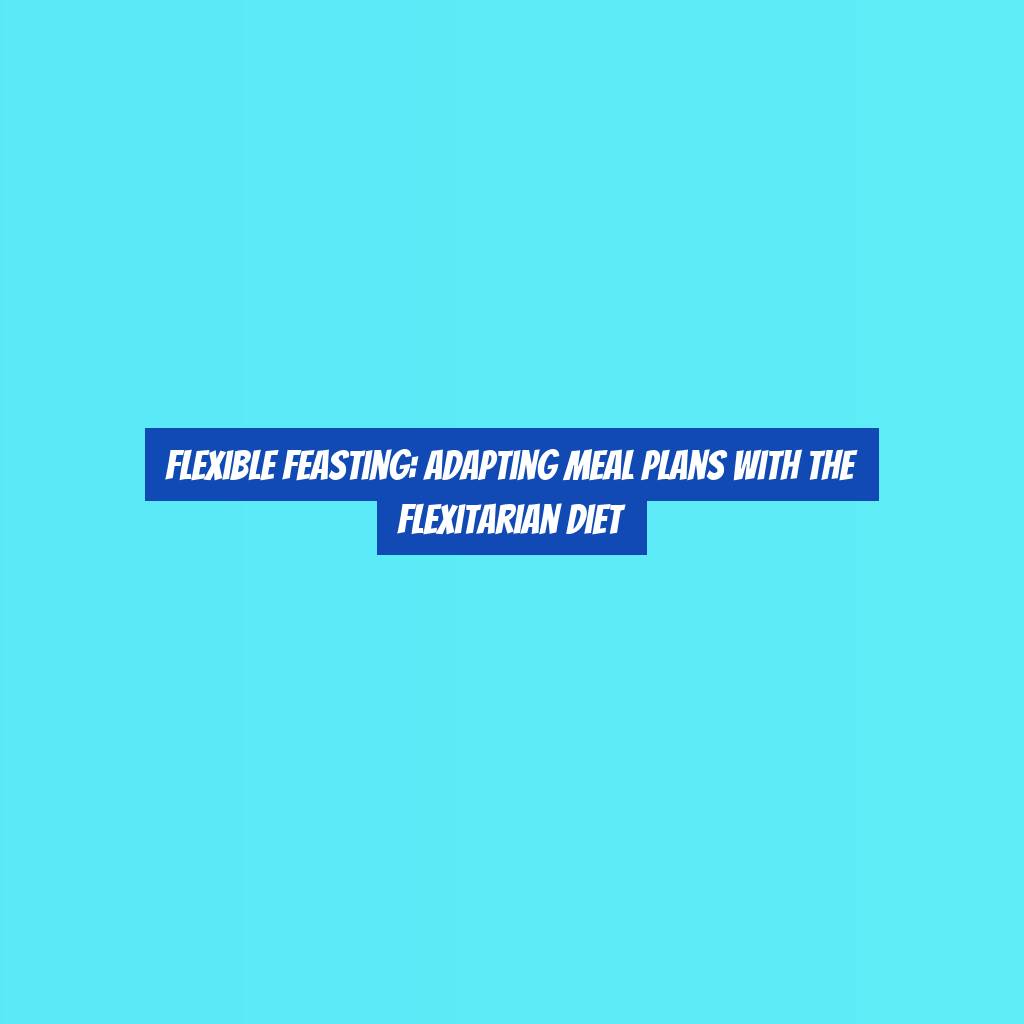Flexible Feasting: Adapting Meal Plans with the Flexitarian Diet
Imagine creating a colorful, vibrant plate filled with a variety of fresh vegetables, grains, and a touch of lean protein, all while embracing a flexible approach to your meal planning.
The Flexitarian Diet offers a refreshing take on balancing the benefits of a plant-based lifestyle with the occasional inclusion of meat and fish.
As you explore the concept of flexible feasting within the framework of the flexitarian approach, youG??ll uncover practical strategies for adapting your meal plans to suit your individual preferences and lifestyle.
Whether youG??re looking to incorporate more plant-based meals into your diet or seeking a balanced approach to nutrition, the Flexitarian Diet provides a compelling foundation for creating a sustainable and adaptable eating plan.
Understanding the Flexitarian Diet
Understanding the Flexitarian Diet involves incorporating a predominantly plant-based eating pattern while allowing for occasional consumption of meat and other animal products. The key idea is to focus on plant-based foods like fruits, vegetables, whole grains, legumes, nuts, and seeds, while maintaining the flexibility to enjoy meat and other animal products in moderation. This approach allows you to reap the benefits of a vegetarian diet while still satisfying your cravings for animal-derived foods.
By prioritizing plant-based meals, you can increase your intake of essential nutrients, such as fiber, vitamins, and antioxidants, which are abundant in fruits and vegetables. This dietary shift may also contribute to improved digestion, weight management, and overall well-being. Additionally, reducing the frequency of meat consumption can have positive implications for both personal health and the environment.
Embracing the Flexitarian Diet means you have the freedom to choose when to include animal products in your meals, granting you the flexibility to adapt your eating habits based on your preferences and lifestyle. This balanced approach can make the transition to a more plant-focused diet feel achievable and sustainable.
Building a Plant-Based Foundation
To establish a strong plant-based foundation for your flexitarian diet, begin by incorporating a variety of colorful fruits and vegetables into your daily meals. Aim to fill half of your plate with vibrant, nutrient-rich produce such as leafy greens, bell peppers, berries, and sweet potatoes. These foods arenG??t only packed with essential vitamins, minerals, and fiber but also add a burst of flavor and visual appeal to your meals.
In addition to fruits and vegetables, include a variety of plant-based proteins like beans, lentils, tofu, and quinoa in your diet. These protein sources arenG??t only beneficial for your health but also versatile and can be incorporated into a wide range of dishes. Experiment with different recipes to find delicious ways to enjoy these plant-based proteins.
Furthermore, whole grains such as brown rice, whole wheat pasta, and oats can contribute to a well-rounded plant-based diet. These grains provide sustained energy and are rich in fiber, aiding in digestion and promoting overall gut health. Incorporating these plant-based staples into your meals forms the cornerstone of a balanced and nutritious flexitarian diet.
Incorporating Flexibility With Meat and Fish
If youG??re considering incorporating flexibility with meat and fish into your flexitarian diet, focus on selecting high-quality, sustainable options that align with your dietary preferences and health goals. When it comes to meat, opt for lean cuts of grass-fed or pasture-raised beef, organic poultry, and sustainably sourced pork.
Incorporating fish can provide essential omega-3 fatty acids and lean protein, but itG??s crucial to choose low-mercury, sustainable options such as wild-caught salmon, sardines, or rainbow trout.
Experiment with plant-based protein sources like legumes, tofu, tempeh, and seitan to reduce your reliance on meat and fish. These alternatives offer a variety of textures and flavors, making them versatile additions to your meals.
Consider integrating Meatless Mondays or seafood-free days to slowly reduce your meat and fish consumption while increasing plant-based options. This gradual approach allows you to adapt to new flavors and textures, making the transition to a more flexible diet easier.
Keep in mind that the key to success with the flexitarian diet is to find a balance that works for you, so listen to your body and make adjustments as needed.
Navigating Meal Planning Challenges
Dealing with conflicting dietary preferences and time constraints can pose challenges when planning flexitarian meals. ItG??s important to navigate these obstacles to ensure that your meal plans are sustainable and enjoyable. Here are some tips to help you overcome meal planning challenges:
-
Have open and honest conversations with family members or housemates about your dietary preferences and find common ground to accommodate everyoneG??s needs.
-
Consider creating a shared meal planning calendar to streamline the process and ensure that everyoneG??s preferences are taken into account.
-
Dedicate some time on the weekends to prepare versatile ingredients that can be used in multiple dishes throughout the week. This can save time and make meal preparation more manageable.
-
Look for simple and flexible recipes that can easily be adapted to include or exclude meat, making it easier to cater to different dietary preferences.
-
Explore New Ingredients
-
Embrace a variety of plant-based proteins such as lentils, beans, tofu, and tempeh to add diversity and nutrition to your meals.
-
Experimenting with different ingredients can help keep your meals exciting and satisfying.
Balancing Nutritional Needs
Balancing your nutritional needs on a flexitarian diet requires thoughtful consideration of protein sources and the incorporation of a variety of nutrient-rich foods. As a flexitarian, you have the flexibility to choose from a wide range of plant-based and animal-derived protein sources.
Legumes, tofu, tempeh, and edamame are excellent plant-based options, while eggs, dairy, and occasional servings of lean meats can provide additional protein and essential nutrients.
ItG??s important to focus on incorporating a diverse array of fruits, vegetables, whole grains, nuts, and seeds into your meals to ensure youG??re meeting your nutritional requirements. These foods not only provide essential vitamins and minerals but also contribute to your overall fiber intake, which is crucial for digestive health and satiety.
Additionally, consider incorporating sources of omega-3 fatty acids, such as flaxseeds, chia seeds, and walnuts, to support heart and brain health.
Conclusion
In conclusion, the Flexitarian Diet offers a flexible approach to incorporating more plant-based foods into your meals while still allowing for occasional consumption of meat and fish.
By building a plant-based foundation and navigating meal planning challenges, you can balance your nutritional needs and enjoy the benefits of a more sustainable and health-conscious eating style.
With some creativity and adaptability, you can easily adapt your meal plans to fit the principles of the flexitarian diet.






